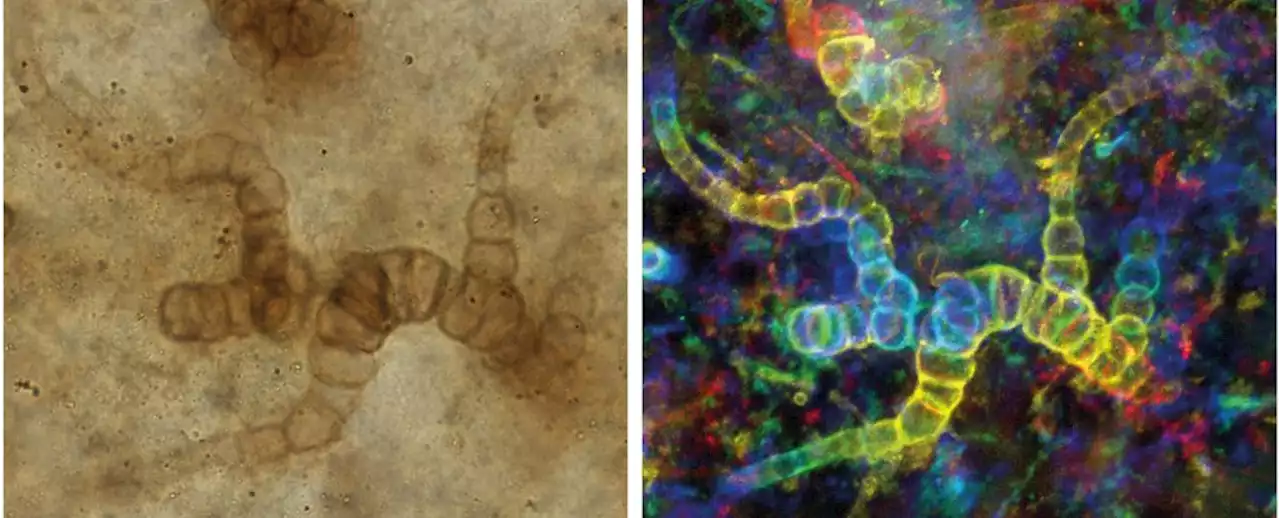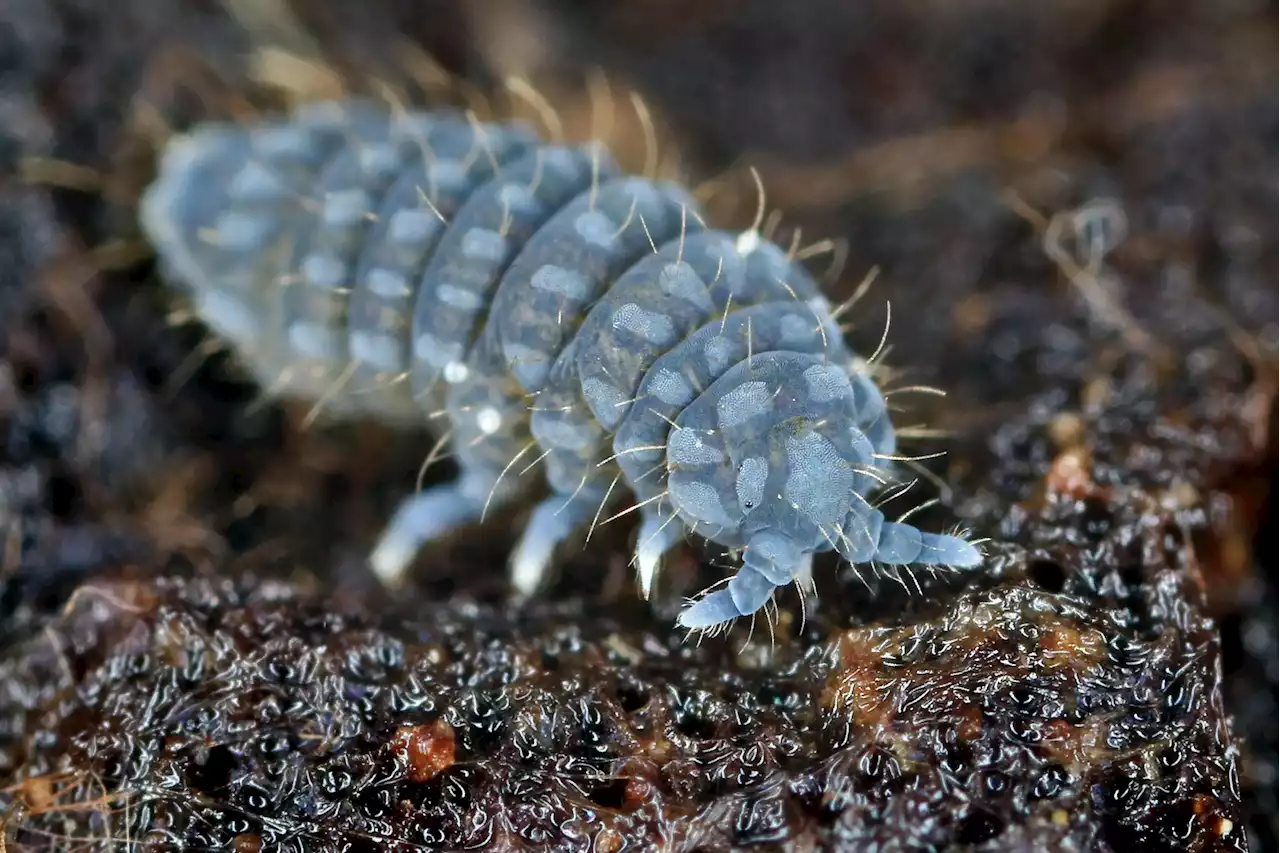More than 400 million years ago, an insect-like animal called the springtail developed a small protein that prevents its cells from freezing. The globe was hot and humid. The sea was teeming with life. Early squids, eel-like fish, and sea worms hunted smaller animals. Above ground, however, nothi
Springtails are ancient. They first appeared more than 400 million years ago and probably share an ancestor with insects. Since then, however, they have evolved in a different direction than insects. And we now know they were the first animal to develop antifreeze proteins. Credit: Philippe Garcelon / Wikimedia Commons
Life in the Ordovician period looked very different from today. The land was barren and devoid of life, but the sea was teeming. Squids and sea anemones, which can be seen in the illustration, were particularly dominant. But springtails existed at this time as well. Credit: Fritz Geller-Grimm / Wikimedia CommonsOne of the animals that survived, however, was the springtail. A small, insect-like animal that had developed a special strategy to combat the cold.
The animal takes its name from its forked tail that it holds under its body like the bar of a catapult. The tail is also known as a furcula and the animal can release it quickly and leap up to 10 centimetres into the air if attacked by an enemy e.g. a spider.Tiny Animals in Petri dishes “The calculations show that springtails developed the antifreeze protein long before other animals. It didn’t happen for fish and insects until a million years later. Although plants and microorganisms, such as bacteria and single-celled algae, might have developed a similar mechanism even earlier,” he says.Martin Holmstrup and his colleagues at the Department of Ecoscience gathered the springtails for the lab themselves. They were gathered in Denmark, Iceland and Greenland.
Springtails come in many shapes and sizes – and there are more than 9,000 different species. And these are just the number of species we have discovered. The researchers estimate that there exist twice as many, if not more, species of springtail. Credit: Andy Murray / Wikimedia CommonsHowever, this special protein is not the only ability that makes it possible for springtails to survive in the harsh cold of the Arctic. They have another trick up their sleeve.
United States Latest News, United States Headlines
Similar News:You can also read news stories similar to this one that we have collected from other news sources.
 This Ancient Organism Crawled Onto Land Over 400 Million Years AgoA close look at a mix of old and newly discovered fossils indicates that an ancient species of photosynthesizing bacterium was among the first of its kind to make its home on dry land more than 400 million years ago.
This Ancient Organism Crawled Onto Land Over 400 Million Years AgoA close look at a mix of old and newly discovered fossils indicates that an ancient species of photosynthesizing bacterium was among the first of its kind to make its home on dry land more than 400 million years ago.
Read more »
 Archaeologists discover ancient shoe marks in South AfricaA team of researchers in South Africa has encountered more than 350 vertebrate tracksites along the coast dating back 70,000 to 150,000 years.
Archaeologists discover ancient shoe marks in South AfricaA team of researchers in South Africa has encountered more than 350 vertebrate tracksites along the coast dating back 70,000 to 150,000 years.
Read more »
 Astronomers weigh ancient galaxies' dark matter haloes for 1st timeThe measurement of the mysterious form of matter around these quasar galaxies could have profound implications for our understanding of how the cosmos has evolved.
Astronomers weigh ancient galaxies' dark matter haloes for 1st timeThe measurement of the mysterious form of matter around these quasar galaxies could have profound implications for our understanding of how the cosmos has evolved.
Read more »
 DDV: Complete Belle's The Chronicles of the Ancient in Dreamlight ValleyBecome the best of friends with Belle after completing her level 10 friendship quest in Disney Dreamlight Valley.
DDV: Complete Belle's The Chronicles of the Ancient in Dreamlight ValleyBecome the best of friends with Belle after completing her level 10 friendship quest in Disney Dreamlight Valley.
Read more »
 Patch a potential privacy risk by deleting your ancient LiveJournalFollow these steps to delete your LiveJournal account before anyone else can read the stuff you posted as a teenager. You can back it up too, if you want.
Patch a potential privacy risk by deleting your ancient LiveJournalFollow these steps to delete your LiveJournal account before anyone else can read the stuff you posted as a teenager. You can back it up too, if you want.
Read more »
 Ancient Plant Protein Could Create Climate-Resilient CropsReconstructed ancient plant protein should help crops counter the ongoing rise in global temperatures, says Cornell University plant biologist.
Ancient Plant Protein Could Create Climate-Resilient CropsReconstructed ancient plant protein should help crops counter the ongoing rise in global temperatures, says Cornell University plant biologist.
Read more »
